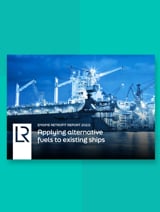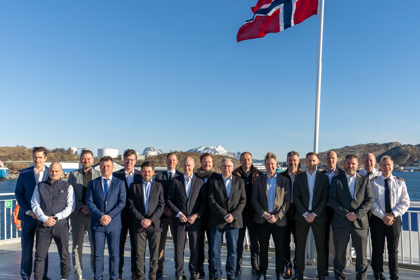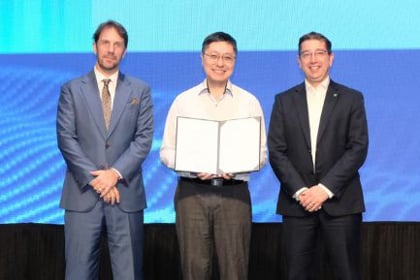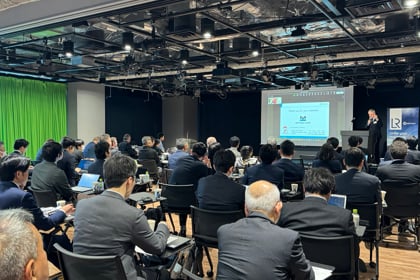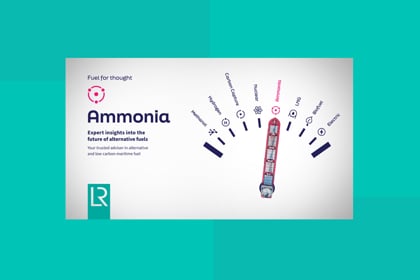The Fourth IMO GHG Study is now available and due to be considered by the IMO Marine Environment Protection Committee (MEPC) later this month. But what does it say, and what does it mean for measures to reduce GHG emissions from ships?
This latest study provides inventories for CO2e (or carbon dioxide equivalent) emissions from international shipping from 2012 to 2018, a revised baseline for 2008 and projections to 2050. This is vital management information that should feed into the work to agree short-term measures to reduce carbon intensity by 2030 (Energy Efficiency Existing Ship Index (EEXI) and in-service carbon intensity management) and it provides a timely reminder of the scale of the energy transition required if greenhouse gas (GHG) emissions are to be halved by 2050 (uptake of low- and zero-carbon fuels).
The study shows that little progress has been made since 2015 in terms of organic reductions in carbon intensity and trade demand continues to outstrip that progress. The result is that CO2e emissions from international shipping have increased by 6% between 2012 and 2018. Most carbon intensity reductions achieved since 2008 are considered to have been delivered before 2012 in response to economic conditions, which have promoted reductions in speed. The Energy Efficiency Design Index (EEDI) has influenced some change, but generally this is limited to an increase in deadweight for new ships with no significant impact at fleet level.
On average, the global fleet is operating at between 40% and 60% of main engine load, according to the new study, but individual ships are operating with substantial variability in key determinants of carbon intensity. As such there is scope for measures that influence operational behaviours to ensure that all ships achieve in-service carbon intensity performance which matches the best performing ships of the same type. On the other hand, measures focused on simply locking-in already delivered carbon-intensity reductions offer little in terms of an effective regulatory response. This outcome supports the direction the IMO is most likely to go in November, which will be using in-service carbon intensity management to augment a minimum technical standard (EEDI and EEXI).
The study shows that little progress has been made since 2015 in terms of organic reductions in carbon intensity and trade demand continues to outstrip that progress.
An interesting question is whether the current fleet-level trend in main engine loads translates into a need to increase the use of sustainable alternative low-carbon energy carriers earlier than previously thought. Currently, we do not tend to think of alternative low-carbon energy carriers in the context of IMO’s ambition for 2030. We might need to.
As carbon intensity continues to rise, so too do CO2e emissions. The forecast growth in those emissions has been refined, and the scale of potential future growth has been moderated to represent 90% to 130% of CO2e emissions in 2008, rather than the 50% to 250% found in the third IMO GHG Study. However, none of the forecasts are compatible with the Initial IMO Strategy, or the Paris Agreement temperature goals. Work on revising the marginal abatement cost curves for various abatement technologies highlights the significance and cost uncertainties associated with zero-carbon energy carriers in achieving reductions in CO2e emissions compatible with the 2050 level of ambition. Such fuels may unlock 64% of CO2 abatement potential, but that is a serious and complex energy transition by any measure. Early and persistent signals to de-risk capital investment at sea and ashore are needed.
While CO2 remains the dominant source of shipping’s climate impact, the growth in methane emissions (155%, 2012 – 2018) and the new inventories for climate forcing black carbon cannot be ignored. It is difficult to interpret the study as anything other than making the case to regulate these two short-lived climate pollutants (a big impact on the heat energy equilibrium relative to CO2, but over a much shorter timeframe), at least on a tank-to-wake basis. But care needs to be taken to avoid unintended consequences of black carbon‑related regulations, such as pilot fuels, which are still needed.
The change in method in the study to better define the relative contributions of domestic and international shipping has transferred emissions previously attributed to international shipping to the domestic fleet. The result is a 130% increase in domestic shipping’s inventory. This will hit nationally defined contributions and will have knock-on effects for international shipping if domestic shipping is strictly regulated.
There is no doubt that the work to operationalise the Initial IMO Strategy needs to keep pace with what the data is saying about carbon intensity and tank‑to‑wake GHG emissions to bring forward work on the latter. There are different ways of interpreting some of the results of the study, but let’s not pretend anyone has got GHG emissions under control. There remains the potential for substantial growth, both new and latent. An urgent move to operationalise the intent to increase the uptake of low- and zero-carbon energy carriers is needed.





